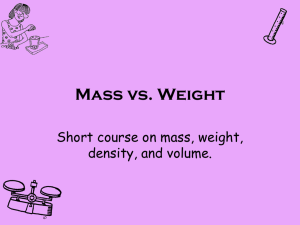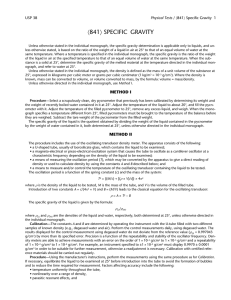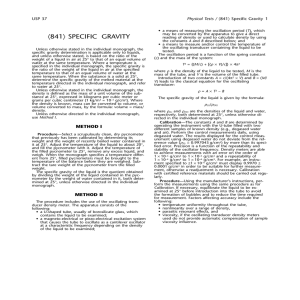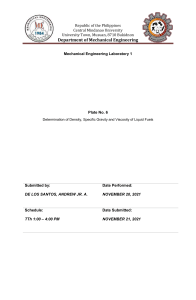Lecture 3-modi.pptx
advertisement
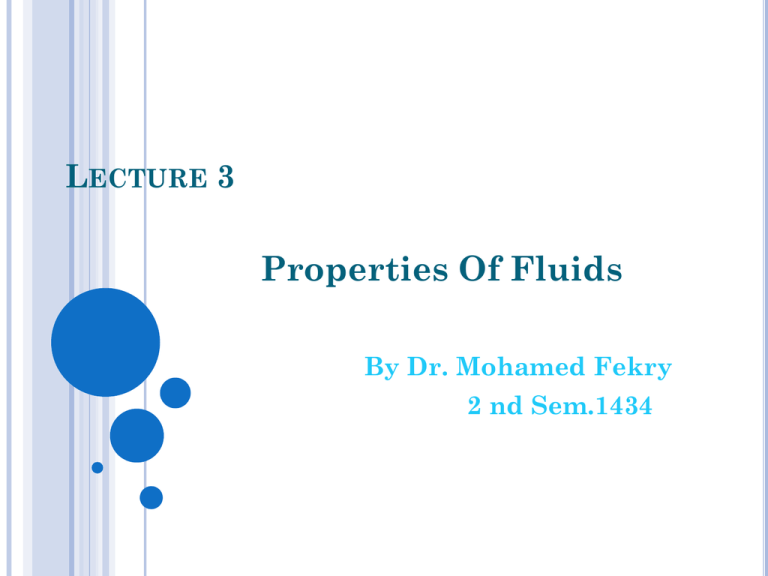
LECTURE 3 Properties Of Fluids By Dr. Mohamed Fekry 2 nd Sem.1434 PROPERTIES OF FLUIDS Density (r) and Specific Volume (v) Specific Gravity (SG) Specific Weight (g) Density of ideal gas Coefficient of Compressibility (k) Coefficient of Volume Expansion (b) Viscosity (m) Surface Tension (s)& Capillary Effect (h) 2 OBJECTIVES When you finish reading this chapter, you should be able to: Have a working knowledge of the basic properties of fluids and understand the continuum approximation Have a working knowledge of viscosity and the consequences of the frictional effects it causes in fluid flow Calculate the capillary rises and drops due to the surface tension effect 3 Density (r): mass per unit volume Specific Volume (v): volume per unit mass …………… m3/kg 4 Specific Gravity, or relative density (SG): the ratio of the density of a substance to the density of some standard substance at a specified temperature (usually water at 4°C, for which rH2O 1000 kg/m3) - Dimension or dimensionless quantity? r w = 1 g/cm3 = 1 kg/l SG s = r s in units of g/cm3 or kg/l the numerical value of the specific gravity of a substance is exactly equal to its density in g/cm3 or kg/L Hydrometer A direct-reading instrument for indicating the density or specific gravity of liquids is called hydrometer. 5 - What would you conclude about substrates with specific gravity less than 1.0? 6 specific weight (g):The weight of a unit volume of a substance g = w/v = m.g/v = (m/v) . (g) = r g The specific weight of water for ordinary temperature variations = 62.4 lb/ft3, or 9.81 kN/m3. 7 Density of Ideal Gases The density of a substance, in general, depends on temperature and pressure. The density of most gases is proportional to pressure and inversely proportional to temperature. Any equation that relates the pressure, temperature, and density (or specific volume) of a substance is called an equation of state. The simplest and best-known equation of state for substances in the gas phase is the ideal-gas equation of state, expressed as Where: P is the absolute pressure, v is the specific volume, T is the absolut) temperature, in the SI is the Kelvin scale r is the density, and R is the gas constant. 8 Temperature conversion 9 10 Example: If the constants for the following gases are: R air = 287 J/Kg.K R H2 = 4127 R CO2 = 189 Find the densities and the specific weights at 200 Kpa and 37.8 °C Solution Ideal gas law r = P/RT r = (200000)/(37.8 + 273).R = 643.2 / R (kg/m3) g = r. g = 11

